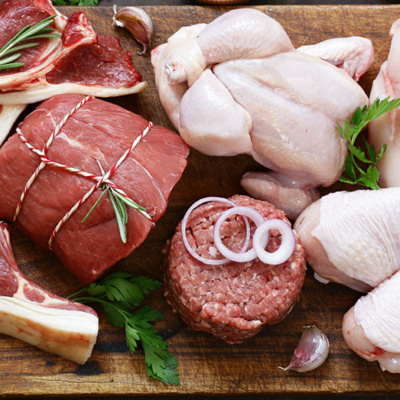top of mind news
- DOL Issues New Overtime Pay Rules
- Where Supply Meets Demand for Restaurants
- Restaurants Face Workplace Hair-Bias Laws
- Working Lunch: 2019 Midterm Elections Approach
- How a Restaurant Can Get its Money Back After a Dine and Dash
- Restaurant Managers Are Not Bank Tellers. Employees Deserve Safety.
THE FARM
Poultry
Weekly chicken harvests continue to run well above year ago levels, with slaughter for the week ending September 14th up 7.4% from the year prior. Heavier bird weights persist and have pushed the six-week (RTC) chicken production 4.3% over a year ago. This is keeping the market well supplied and is making it tough for prices to find support. Breast meat prices have sunk to their lowest levels for the early fall since at least 2000, and further downward seasonal pressure is still likely. Even the wing markets are on the defensive, fading counter-seasonally moving into October. Expect larger chicken output to weigh even heavier on the chicken complex this fall.
Beef
Beef production last week jumped sharply, up 4.8% from the week prior but was down 1% compared to the same week a year ago. The Choice boxed-beef cutout value continues to drop but is still nearly 5% over a year ago. The ribs remain the only major primal to fall back to year-ago levels, but buying interest ahead of the upcoming holidays should foster support on rib cuts and PSMO tenderloins. Beef grinds remain elevated, as well, but have begun to decline notably as of late. The beef 50s continue to hold relatively firm. Lighter carcass weights are tempering fatty trimmings, so look for pricing on the 50s to remain inflated.
Pork
Pork production backed off last week but remained well above the Hurricane Florence stunted production schedules a year ago. Wholesale pork prices continue to struggle with USDA cutout value being the lowest for this time of year since at least 2013 (when mandatory pork reporting began). But look for upside price risk for pork moving forward. Bellies have been on a slow rise and should continue higher into the fall. Pork trimmings experienced strong forward sales last week, and while prices are falling, this forward buying may underpin prices.
THE SEA
Seafood
The shrimp markets are tracking well above 2018’s historically low levels. And this is encouraging solid U.S. imports. During July, the world exported 8.2% more shrimp to the U.S. than the previous year. Strong U.S. shrimp imports are anticipated to persist during the next several months. This could temper the upside risk in shrimp prices during the fall. Shrimp prices typically rise around 5% from this month through December.
THE GARDEN
Produce
The fall potato harvest is progressing with some delays during the last week due to adverse weather. As of September 22nd, 27% of the Idaho crop had been harvested which compares to 36% last year and 32% for the five-year average for the date. Potato supplies should continue to improve in the coming weeks which should put downward pressure on the markets. Lime supplies remain limited due in part to a short term disruption in the harvest in Mexico. U.S. lime imports from Mexico last week were 23% less than the same week last year.
THE KITCHEN SINK
Dairy
After pricing at nearly five-year highs just last week, cheese block and barrel prices have fallen 10.9% and 16.9% respectively since then. U.S. cheese stocks as of August 31st were up .2% year-over-year and it was only the second build for the month since 1986. History hints that cheese prices can still decline this fall. Spot butter prices have been choppy but are near the recently set 20-month low ($2.1025). August 31st butter holdings were 4.9% more than the prior year. Butter prices may rise in the near term due the nearing holiday season but should trend seasonally lower thereafter.
Grains
The grain feed markets are fairly stable. The U.S. corn harvest is underway with 7% of the crop in the bin as of Sunday. This is marginally late, but maturity progress suggests that the harvest could lag further behind historical averages in the coming weeks. Absent a major weather event, this is not a significant concern for the crop, however.
Oil
Natural gas futures last week were the highest in five-months but have fallen notably since then. As of September 13th, total U.S. natural gas stocks were up 14.5% (yoy). Still, history says that the price risk for natural gas during the fall is higher.













